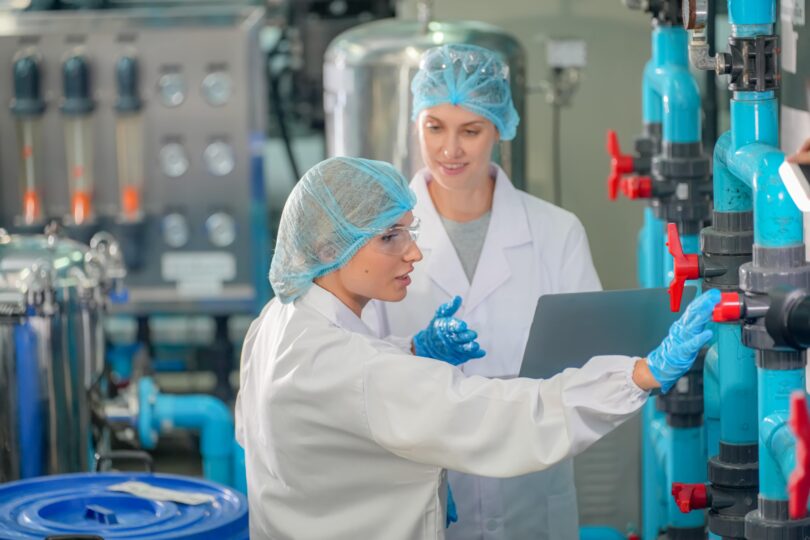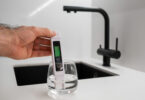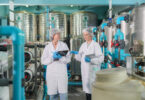TheYou turn on the faucet, and clean water flows out. But have you ever wondered what happens to make that water safe to drink before it reaches your glass? advance water treatment technologies involves many steps to remove contaminants and ensure portability. Various technologies are used today to treat our water supply and make it suitable for human consumption. From membranes and UV light to ozone and reverse osmosis, water treatment facilities utilise innovative processes to guarantee you have access to clean water whenever you need it. Here we cover the top 10 water treatment technologies in use today to purify the water you depend on every single day.
Filtration Methods for Water Treatment
Filtration is one of the most common methods used to treat water. There are several water purification technology types that can remove various contaminants
Sediment filters
Sediment filters remove particles like dirt, rust, and silt. They have a porous membrane that lets water pass through but catches larger particles. Sediment filters often use sand, cloth, or paper and are a first step in many treatment systems.
Activated carbon filters
The Activated carbon filters contain charcoal that absorbs contaminants like chlorine, benzene, and pesticides. The carbon has a huge surface area that traps impurities. These filters need to be replaced periodically as the carbon becomes saturated.
Reverse osmosis
In Reverse osmosis pushes water through a semipermeable membrane that removes ions, molecules and larger particles. The Reverse osmosis can remove bacteria, heavy metals like lead, and chemicals. The process requires a pump to push the water through the membrane.
Ultraviolet light
Ultraviolet or UV light kills microorganisms like bacteria, viruses, and protozoa by damaging their DNA. People often use UV filters with other methods like reverse osmosis or carbon filters. You need to replace the light annually to remain effective.
Distillation
Distillation involves boiling the water and then condensing the resulting steam. This leaves behind contaminants and kills pathogens, producing very pure water. However, distillation requires a lot of energy and time. It may remove some beneficial minerals as well.
Using a combination of filters provides the broadest protection for home treatment systems. Work with a professional to determine the right filtration methods based on your local water quality and needs.
Disinfection Techniques to Purify Water
Disinfection techniques are commonly used to purify water and make it safe for drinking. Disinfection water treatment chemical kills or inactivates disease-causing microorganisms like bacteria, viruses, and protozoa.
Chlorination
Add chlorine to water to inactivate microbes. We have been using chlorine disinfection for over a century and it is still the most popular method. It is carefully controlled and monitored by the level of chlorine. While very effective, it can react with organic matter in water to form disinfection byproducts
Ozonation
Ozone gas (O3) is bubbled through the water which kills pathogens. Ozone breaks down quickly after disinfection and leaves no taste or smell. However, an on-site ozone generator requires monitoring of the byproducts it produces.
Ultraviolet Irradiation
Scientists use UV light to damage the DNA and RNA of microbes, destroying their ability to reproduce and infect. UV disinfection leaves no taste or smell and produces no known disinfection byproducts. However, it requires electricity to generate the UV light and may not inactivate some protozoa.
Membrane Filtration
Membranes with tiny pores are used to physically remove pathogens from water. Microfiltration removes protozoa and some bacteria while reverse osmosis can remove viruses. Membrane filtration requires no chemicals but can be expensive. It produces very pure water but at a high cost.
By understanding the pros and cons of different disinfection techniques, water treatment plants can choose methods that balance effectiveness, cost, and safety for their particular needs. The end result is water you can feel good about drinking.
Advanced Oxidation Processes for Water Treatment
Advanced Oxidation Processes (AOPs) are some of the most effective methods for eliminating contaminants from water that are difficult to remove using conventional treatment techniques. AOPs utilise the oxidising power of hydroxyl radicals (•OH) to break down pollutants in water.
Ozone Oxidation
People use the powerful oxidant Ozone (O3) to disinfect and remove unwanted compounds from water. Ozone breaks down organic matter and other pollutants through oxidation. Ozone oxidation is often used as a pretreatment before other processes like filtration. It helps remove contaminants that can clog filters and membranes.
Hydrogen Peroxide and Ozone
By combining hydrogen peroxide (H2O2) and ozone, we generate hydroxyl radicals to oxidize contaminants. We dose the hydrogen peroxide into the water, then bubble ozone through to produce hydroxyl radicals.
This process, known as peroxone, is very effective at breaking down chemical contaminants and disinfecting water.
Ultraviolet Light and Hydrogen Peroxide
UV/H2O2, another AOP used for water treatment, uses ultraviolet (UV) light along with hydrogen peroxide. When UV light reacts with hydrogen peroxide in water, it forms hydroxyl radicals. The UV light breaks down the hydrogen peroxide into hydroxyl radicals which then oxidize the contaminants. UV/H2O2 is particularly good at removing organic chemicals, pesticides and herbicides from water.
Fenton’s Reagent
Fenton’s reagent, made of hydrogen peroxide and iron salts (ferrous sulfate or ferric chloride), is a simple but effective AOP. When hydrogen peroxide reacts with the iron salts, hydroxyl radicals are produced. The Fenton’s process works best under acidic conditions (pH 3 to 5) and at higher temperatures. People commonly use it to treat industrial wastewaters and landfill leachate.
AOPs provide an environmentally-friendly way to remove even the most stubborn contaminants from water using the oxidizing power of hydroxyl radicals. Combining oxidants like ozone and hydrogen peroxide with processes such as UV light generates highly reactive hydroxyl radicals that can break down pollutants that would otherwise be difficult to eliminate.
Membrane Technologies for Water Purification
Membrane technologies use semi-permeable membranes to remove contaminants and impurities from water. Several popular types of membrane filters are used for water treatment:
Microfiltration
The Microfiltration uses membranes with very small pores to remove particles like sediment, bacteria, and protozoa. It has pore sizes of 0.1 to 10 microns, which allows water and small molecules to pass through but captures larger particles. Many microfiltration systems use pretreatment before reverse osmosis.
Ultrafiltration
The Ultrafiltration uses membranes with pores smaller than microfiltration, between 0.01 to 0.1 microns, to remove dissolved solids, large colloids, proteins, and other organic molecules. Ultrafiltration can be used to remove bacteria, protozoa, and some viruses from water. It requires low operating pressure and can remove a high percentage of contaminants.
Nanofiltration
The Nanofiltration uses membranes with pores between 0.001 to 0.01 microns to remove divalent ions like calcium and magnesium, natural organic matter, and some synthetic organic compounds. Nanofiltration provides high removal of hardness ions and natural organic matter. It can also be used for water softening and natural organic matter removal.
Reverse Osmosis
Reverse osmosis, or RO, uses a semi-permeable membrane that removes ions, molecules and particles larger than water molecules. The RO membranes have pores 0.0001 microns or smaller, so they can remove contaminants like heavy metals, total dissolved solids, bacteria and protozoa. RO requires high operating pressure but can remove the highest percentage of contaminants of any membrane technology. RO is used for desalination and to produce very pure water.
By using membranes with different pore sizes, these technologies provide a range of contaminant removal for various water treatment applications. They offer an energy-efficient and chemical-free method of water purification when compared to other treatment techniques.
Other Innovative Water Treatment Methods
As the demand for clean water increases, new and innovative treatment technologies are constantly emerging. Here are a few of the latest methods for purifying water:
Membrane Bioreactors
Membrane bioreactors (MBRs) use a combination of membranes and biological treatment to filter contaminants from wastewater. MBRs produce very high quality effluent and are excellent for water reuse applications. They are more compact than conventional treatment methods but have higher operating and maintenance costs.
Ultraviolet (UV) Disinfection
UV light is very effective at killing pathogens like bacteria, viruses, and protozoa in water. The UV treatment uses special UV lamps to expose microorganisms to UV radiation, damaging their DNA and rendering them unable to reproduce. UV disinfection is a popular method for treating drinking water and wastewater. It is environmentally friendly, chemical-free, and cost-effective.
Electrocoagulation
Electrocoagulation uses an electrical current to remove contaminants from water. An electric charge applied to metal plates in the water causes them to release ions. Metal ions cause the particles in the water to clump together into larger particles that can be filtered out. Electrocoagulation can treat wastewater, surface water, and some industrial wastewater. It requires less space and time than some conventional methods but has higher operating costs.
Forward Osmosis
Forward osmosis (FO) is an emerging method for desalination and water treatment. FO uses an osmotic membrane and osmotic pressure to extract clean water from contaminated water. FO requires little energy and no heating but the membranes are still quite expensive. Some wastewater treatment systems use FO and may use it more widely for desalination and other applications as membrane costs decrease.
These new and improved water treatment technologies utilise innovative methods to purify water in efficient, sustainable ways. As global water challenges continue to grow, technologies like these will play an important role in ensuring access to clean water for all.
Conclusion
So there you have it, the top 10 water treatment technologies in use today keeping your drinking water safe and clean. As you’ve read, it takes an enormous amount of research, engineering, and resources to properly treat the trillions of gallons of water consumed every day around the world. Next time you turn on the faucet, think about the journey that water has taken to get to your glass and appreciate how access to clean water is something many of us take for granted. Though new threats emerge, we have hope that continued innovation in water treatment will protect and make this life-sustaining resource available for generations to come. Drink up your water has been on quite the adventure!








